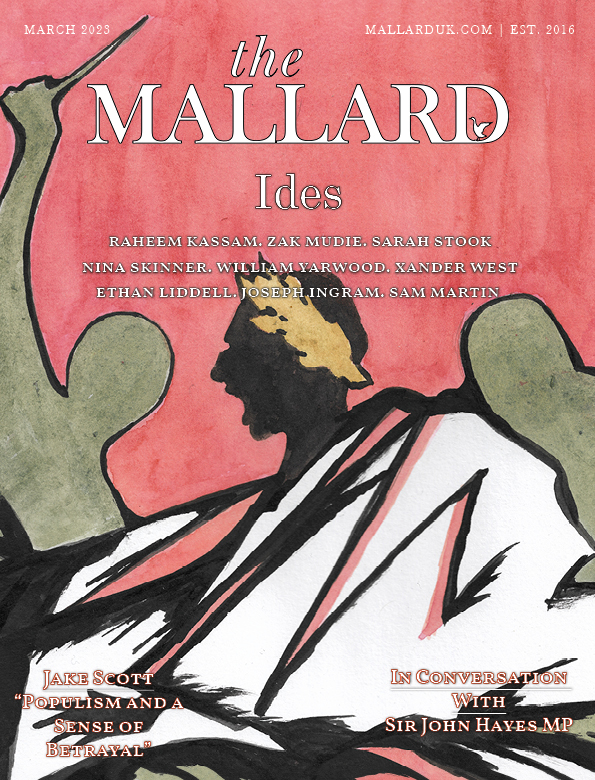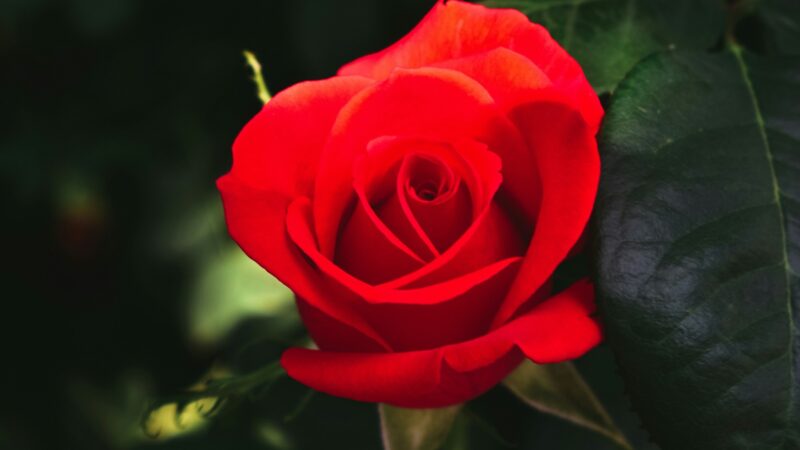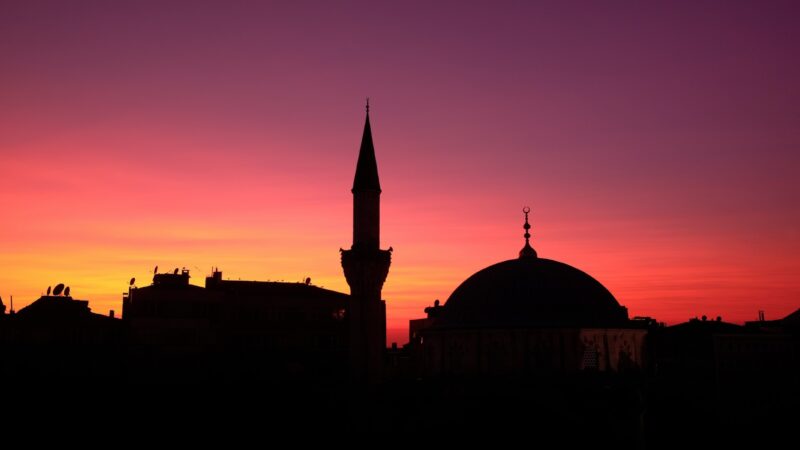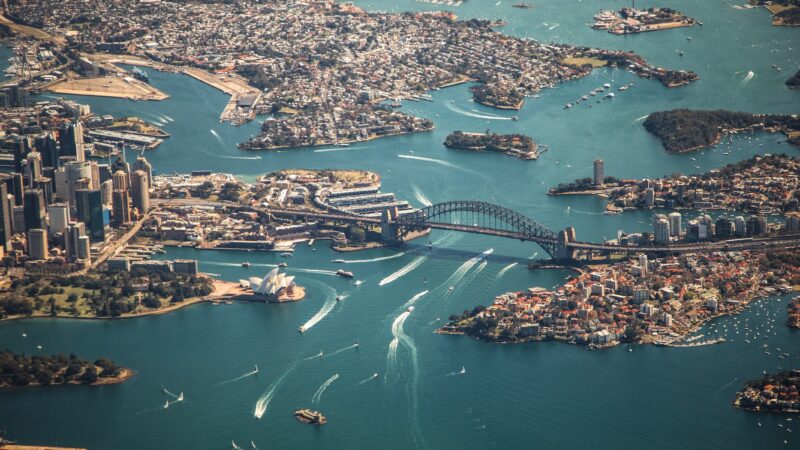Leading up to December 2022, when I was preparing for my PhD viva, I was told by colleagues – quite consistently – that populism was back on the academic agenda. Clearly, I had timed my PhD well, the covid pandemic aside.
Now, at the conclusion of the process, I have people ask me what my core conclusions are. The truth is, I say, populism is going to remain a permanent feature of our political system for a long time, to such an extent that I think, for all his mistakes and poor insights, Cas Mudde was right to describe our era as the ‘populist zeitgeist.’ I am not alone in making this prediction: in his farewell speech to the European Parliament, Nigel Farage said populism ‘was very popular’; and there abound many different academic attempts at explaining the likely enduring appeal of populism.
Among them I find particular value in Nadia Urbinati’s Democracy Disfigured (2014) and Me, The People (2019): the former is particularly focused on how democracy can be transformed, though populism is only part of that story. In that book, Urbinati attempts to analyse the role of what she calls the doxa in democracy, emphasising the linguistic and dialogical elements of democracy as methods of identifying conflict and resolving them; in response to this, says Urbinati, populism attempts to ‘fix’ the inevitability of conflict. It can do this because democracy (and politics in general) is actually about never attempting to remove conflict, merely attempting to ‘win’ the immediate conflict, whilst accepting that you may ‘lose’ the next one. The underlying unity is, as a result, quite thin, and little more than a general agreement on the process of conflict and resolution, rather than an agreement on the resolution of conflict specifically.
Populism, says Urbinati, works from within the logic of democracy to recognise the inherently conflictual nature of politics and democracy, and then seeks to deny it. Instead of attempting to win now, and accept the possibility of losing in the future, populism attempts to win forever, and deny the possibility of future conflict. In doing so, populism becomes anti-politics.
In the latter book, Urbinati delves deeper into populism specifically, and considers the internal mechanisms of populism, rather than just the impact it has on democracy. In doing so, Urbinati looks at the role of ‘antiestablishmentarianism,’ ‘antielitism’ and, crucially, the messianic leader, in the emergence of populism.

This is an excerpt from “Ides”. To continue reading, visit The Mallard’s Shopify.
You Might also like
-
Watch Out for The New Labour Playbook
Yes, Labour is still the party of identity fetishists, true-believer yet Dad’s Army-esque revolutionaries, end of times Gaia environmentalists, and public transport strike supporters, groomers, and much else, but so was New Labour. They just knew how to keep the lunacy contained, repackaged, and were desperate enough to try Blair.
Fortunately, Blair did a lot of damage to his own side, not just the country. Blair’s incrementalism didn’t manifest their objectives quickly enough. They were willing to grumble and tolerate it until the Iraq War. From that point on, it became impossible to contain the lunacy; spiralling down through more and more left-wing figures, from Brown to Miliband and then to Corbyn. Consequently, they have tuckered themselves out.
The loss of monolithic public news and broadcasting will also make it much harder, New Labour’s ilk will try to come back. You can still see them. They haven’t gone anyway. They won’t just come from the party, they’ll come from all the people and organisations on their side. Blair himself is still knocking around. The advice comes regularly to ditch the overt progressive evangelism e.g. November last year, May this year.
There’s been a slow trickle of pieces which say things like “Labour need a big personality to take on the Tories”. They’re trying their best to manufacture this. Have you seen the attempts to make Wes Streeting out as if he’s interesting and not just another factory pipeline student union politician, in career background and mindset? Good grief. Progressives used to rob banks, fight guerrilla wars, and write their defiance in their own blood. Sure, threats should be taken seriously, and it’s unpleasant, but Wes, what are you doing sending limp tweets to old ladies?
Anyway, it’s good news! As it stands, the two go-getting types of the progressives are (at least, temporarily) inhibited: the energised, violent, “true believers”, are somewhat withered, and the “professional” sorts have a monumental amount of work to do. They are rebuilding, though, so keep an eye out.
If they can become credible on the following, they’ll be doing well: 1) Tough on Crime, 2) Pro Business, 3) Strong on Foreign Policy, 4) Strong on Defence, and 5) Solid on Our Public Services. It’s going to be difficult. A lot of Labour supporters don’t want to engage on those policy areas at all in the first place, let alone have workable answers to them.
The thing to watch out for is Blair’s two main tricks, which are closely related 1) talking out of both sides of their mouths and 2) presenting progressive solutions in their opponents’ terms.
Regarding the first trick, let’s use immigration as an example: one of the big progressive no-nos, a big right-wing concern, but which they really need to answer.
Just look at the headlines, which tell their own story. Blair admits he didn’t realise how many migrants would come to the UK after EU expansion. OK, but then he also says that immigration is good for the UK economy. Finally, he said that if you want to stay in the EU you have to curb immigration.
None of this is about lowering immigration based on principle or reflects right-wing concerns, or even the general popular reasons why people want it lowered. It’s about tactical necessity, in service of bigger picture goals – staying in the EU and reinforcing hegemony at home. Blair doesn’t admit he was wrong or that mass immigration has been damaging – he is talking out of both sides of his mouth! This helps him to try to flank his political opponents with positions which superficially appear to speak to right-wing concerns.
The reason he does this is very simple and not at all an original observation. In democratic politics it’s (sometimes) a viable strategy to go for (what you think is) the “centre ground”. Labour leaders who won – Ramsay MacDonald, Clement Atlee, Harold Wilson, and Tony Blair, all toned down the crazy in pursuit of the “sensible” and “moderate” centre ground.
Not that it seems to matter – progressives run all the main institutions and the nominal Conservative Party acquiesces and even adopts their agenda and aesthetic – but the key realisation of Blairism is that you must have power to do anything. Public support certainly helps reinforce the perception of complete hegemonic power and the justification for it.
Until Labour gets this by winning an election, the Conservative Party might just safely trundle along. God have mercy on you, Conservative Party. Govern! Or if you must insist on such dull imbecility, get out of the way. Go, all of you, retire to the House of Lords or wherever else you think gives you a veil of dignity, and whatever place can use the content, unaware, and immobile.
Anyway, if Labour doesn’t learn the lessons of Blairism, it risks being confined to 1) old style tax and spend and state power economics, 2) foreign policy which is anti-UK in one way or another, 3) marginal identity fetishism, and 4) screeching denunciation of anyone that dissents. This is because 1) misreads the lessons of the financial crisis, 2) misreads the proper responses to 9/11 and the Iraq War, 3) sees the progressives stuck in the tar-baby of the Culture War (which I am certain it will lose), and 4) just shows them to be unstable, and therefore as unfit to rule.
All of this would be a bit clapped out, but it would be safe and familiar for them, and do they even have the vision to see beyond? Reality and the general zeitgeist have moved on. Conservatives would do well to keep them stuck here.
There are ways out, and Labour seems to be doing a few of these things, though it’s hard to know if they really get it, half get it at someone else’s instruction, or if it’s accidental or coincidental. It’s also unclear how much any of the following will help them.
First, they seem to be hinting at a new progressive coalition i.e. Lib Dems, Greens, etc. tactical voting, selective standing of candidates, to avoid splitting the progressive vote. Will this work? Many use these parties as protest votes and you’d be surprised how many Conservative voters, for example, vote Green or Lib Dem at different elections, for all sorts of reasons, but who would never do it at a general election.
Second, watch out for Labour updating its policy agenda. Safe on this one so far. If they’re sensible it would stop being economically illiterate and suspicious of technology. It would also mean the progressives fully realising that corporations can be used and are willing to side with them if the conditions are right, no matter how temporary. The capitalists really will sell you the rope with which they’ll be hanged. It’s quite something!
Third, watch out for Labour re-discovering the mentality of government. The right needs to do this too, it must be said. The task is to amass power and to assume that (of course) it should be you governing. To do this the left will need some more self-discipline and less self-indulgence. The Labour Party’s sins are pride (how fitting!), envy, wrath, and gluttony. The Conservative Party’s sins are pride and sloth. This tactical swallowing of (some of) their pride doesn’t burden them to pursue policies people actually want. They’ll continue to insist that what voters want aligns with what the Labour Party wants, albeit overlaid with a veneer of sincerity and concern made possible with a more “moderate” leadership. New Labour was subtler still.
New Labour worked because people knew that Blair was prepared to discipline and channel the more insane parts of the Labour Party. Superficially, denial and discipline look very similar. It gave Labour the appearance of normality, reassured enough extra voters, and afforded them the cover of public acceptance to proceed with full-on nation-mutilating progressivism.
Watch out for the New Labour playbook. It will start with Labour controlling its incontinence. It’d be great if the Conservative Party got ahead of the problem by governing. Keep them busy responding to you, keep them too busy to get out of where they’re stuck.
Post Views: 641 -
We Must Ban Cousin Marriages
The fact that Charles II of Spain lived to the age of thirty-eight was nothing short of a miracle- and that’s not because he was born in the 17th century. His nearly four-decade life was filled with physical and mental ailments that would be hard to live with even today’s medical technology.
He flew through wet nurses due to continually biting their nipples until his mother ordered them to stop. Charles could not walk until he was four and walk until he was six, having trouble with both for the rest of his life. He suffered from severe depression and unknown learning and developmental disabilities. On top of this, he had hallucinations, seizures, a congenital heart defect and premature ejaculation. An autopsy revealed a body that sounds like something out of a horror film- one single shrunken testicle, a body without a single drop of blood and rotted intestines. Despite his litany of ailments, he was reportedly a kind boy who enjoyed hunting. Whilst he was clearly at fault in terms of infertility, his poor wives were blamed for not bearing an heir.
The problem with Charles, inheritor of the famous Habsburg chin, was his family line. The Habsburg clan famously interbred and between 1515 and his birth in 1661, no new members were brought to the genetic line. His family tree reads like a wreath and he is related multiple times to each of his family members. Charles’ father was born to two first cousins, whilst his mother was the daughter of an uncle and niece. His parents were similarly uncle and niece. Charles’ sister Margaret Theresa managed to avoid the worst of it all, but she was married off to a man who was both her cousin and her uncle. Only one of her four children managed to pass infancy- she was originally intended to marry her uncle, but never did.
Years of cousin marriage in royal circles led to poor outcomes. Many of these marriages were more distant, but first cousin marriages were not at all rare, particularly on the continent. Philip II of Spain and Maria Manuel were double first cousins, and the only son they produced was so severely disturbed that there was no way that he could take the throne. Philip would marry thrice again- to his first cousin once removed Mary I of England that resulted in no children, the unrelated Elisabeth of Valois with whom he had two very intelligent, capable daughters, and to his niece Anna of Austria, with whom he had one living son.
Another example is that of Philip’s daughter Isabella Clara Eugenia, who married her first cousin Albert VIII of Austria. None of her three children lived past childhood. Philip’s other daughter Catalina Micaela married an unrelated husband but was weakened by having children every year. His son Philip also married his first cousin once removed but fortunately had five children live to adulthood.
We imagine these cousin marriages happening hundreds of years ago, but it is not quite as extinct as one might hope. Even more worryingly, first cousin marriage is perfectly legal in the UK. There’s a stereotype in the Southern USA that white trash folk marry their cousins, but it’s actually completely illegal in most of those states. Here, however, you can go ahead and marry your uncle’s kid.
The practice is most common within Muslims in the UK, with areas such as Bradford seeing large numbers marrying their cousin. The BBC recently reported that cousin marriage for Pakistanis and those of Pakistani origin in Bradford dropped from 60% to 46%- a drop, but not a large enough drop to be sure.
This needs to stop.
First, we must understand why people marry their first cousins. Whilst the Quran lists people who it is forbidden to marry and have relations with, such as siblings, uncles and aunts, cousins are not one of them. Furthermore, across all religious lines, there are economic and social reasons. Money is kept in the family instead of outside clans, tribes and faiths. It keeps a person linked to their family, with an expectation that they will have a stronger connection. For some whose family are originally from abroad, it might keep them linked to their heritage in an alien culture.
The problem, however, lies with the results.
When a person marries a close relation, there is a higher chance of genetic problems for any children. The chance is further increased if there is a family history of cousin marriages. The risk of birth defects increases from 3% to 6% in a cousin marriage- not a huge jump, but an unnecessary and entirely avoidable one for innocent kids. When it comes to fatal genetic disorders, children of South Asian parents are overrepresented in the data- they make up 65% of deaths but 37% of the population. Cousin marriage resulted in the death of 53% of children mentioned.
A 2017 study found that 1 in 5 child deaths in East London came from the parents being related. A 2010 study found 700 children a year were born with genetic disorders as a result of cousin marriage. It is not a minute problem. In a recent episode of the thoroughly fascinating show Cause of Death, which follows the work of a coroner, a young man of thirty-three died suddenly of a rare disorder. Two of his siblings had also died, whilst at least two of the others had tested positive for the disorder. Their parents are cousins.
When it comes to pregnancy, women are told not to take any risks that may harm the baby. She is required to stop smoking, drinking and consuming caffeine. Doing any of those things means risks to the unborn child, so why do we permit cousins to marry when we know the risks?
Even Islamic countries have picked up on the issues, though they have obviously taken no steps to ban the practice. Cousin marriage is very high, even the norm, in Saudi Arabia, and is a nation home to a high number of genetic disorders. As a result, Saudi Arabia has mandated premarital genetic screening for couples. If the results are revealed to be risky, then there’s a way out for the couple. It is said that 60% of couples have ended their engagement after receiving bad news. Iran has implemented a similar system, as well as six other Middle Eastern nations.
If these countries can do something, why can’t we?
Post Views: 1,383 -
AUKUS and The Path Towards an Anglosphere Bloc
In 2023, the international order seems completely up-ended. Moscow has reverted to imperialism with its invasion of Ukraine, China’s regime is unrelenting in its designs towards Taiwan and Iran is edging closer to acquiring a nuclear weapon. Three decades on since the end of the Cold War and it would seem that Western intentions for a peaceful world now lie in tatters.
Yet we Westerners face our own set of problems. The UK remains more or less directionless on the world stage, its economy and reputation in freefall. On the continent, Hungary and Poland seem determined to stall EU centralisation efforts and the once ironclad relationship between Paris and Berlin appears to be weakening. Meanwhile, the US is mired in a state of total electoral chaos that one would normally associate with a banana republic. Perhaps the next leader of the free world will be running the show from a prison cell. At this point, who really knows?
Recent years have seen the UK, like the US, be radically transformed into a viscerally divided country. Although the polls seemingly indicate a majority now regret Brexit and would seek to reverse it, little thought has been given to how willing the British public would be to adopt the Euro or join Schengen – both of which Brussels would force upon us if we were to rejoin. Yet staunch Brexiteers haven’t exactly had much to offer us either. Since leaving, we’ve just about managed to re-secure the existing trade agreements we already had as an EU member and have joined the Comprehensive and Progressive Agreement for Trans-Pacific Partnership (CPTPP) – which is predicted to grow the UK economy by just 0.08% over the next decade. Evidently, any future success we will enjoy as an isolated, declining power remains very unclear.
What is clear though is that the UK desperately needs bolder vision if it wants to drag itself out of the quagmire it is currently sinking into. It needs a new, invigorating national project that can unite its splintered political factions and galvanise support towards a stronger future. The UK has just exited one of the most successful blocs the world has seen, yet it may have already joined an even greater one – AUKUS.
AUKUS – an acronym of its member countries of Australia, the UK and the US – was formed in 2021 to act as a deterrent to Chinese aggression in the Indo-Pacific. As a military pact, its initial moves have been to assist Australia’s acquisition of nuclear-powered submarines as well as to step up information sharing on AI, quantum and hypersonic technologies.
Although originally hesitant about joining, New Zealand’s government has now expressed interest in becoming AUKUS’s fourth member, with Canada quickly following suit. The addition of these countries makes sense given that both have economic and geopolitical interests in the Pacific and equally view China as a threat. Furthermore, being members of the ‘Five-Eyes’ intelligence pact, neither would seek being shut out of any agreements involving information sharing.
However, their compatibility with AUKUS goes beyond military and security concerns. With a shared democratic ethos and a common system of governance, AUKUS represents not just a strategic pact, but also a values-based alliance uniting all of its members, including potential additions Canada and New Zealand. As such, the potential for AUKUS to welcome even broader collaboration seems apparent already.
Proposals for stronger ties between the five countries are nothing new. By far the most popular concept to be imagined has been ‘CANZUK’. Yet another acronym for its member states, this would involve a hypothetical trade and cooperation bloc comprising all aforementioned countries – with the notable exception of the US. Focusing strictly on expanding economic, security and foreign-policy collaboration, its proponents dismiss the idea of any political union. Crucially, free movement would be implemented, however – just not the kind we associate with Schengen. For it would bar anyone with a criminal record, an infectious disease or those considered to be a national security risk.
Its advocates certainly sell the CANZUK vision well. As they point out, with a population of at least 135 million and a combined GDP of over $6 trillion, CANZUK would be among the top four economic powers in the world. It would comprise an area of 18,187,210 km, making it larger than the Russian Federation. Moreover, with similar levels of development, the potential for the kind of one-sided migration occurring between poorer and affluent member states, as witnessed in the EU, would be minimised. It also helps that free-movement treaties are already in effect between some of these countries – notably the Trans-Tasman Travel Arrangement (TTTA) between Australia and New Zealand.
Yet for all its great potential, proponents have glossed over one major problem – trade. Whilst these countries combined make up a significant chunk of the global economy, commerce among them is minimal. As of last year, the UK was New Zealand’s ninth largest trading partner, Canada’s fifth and Australia’s eighteenth. Similarly, Canada ranks low on trade with Australia and New Zealand and vice versa. However, what they each have in common are strong trade links with the US – ranking anywhere from first to third largest trading partner among them. For this reason alone, an Anglosphere bloc without the US does not make sense economically.
This takes us neatly back to AUKUS – or more precisely, the need for its evolution. Embracing the aforementioned ideals of economic integration, foreign-policy coordination and the establishment of a common travel area would undoubtedly turbocharge AUKUS’s power and completely reshape global politics. The addition of Canada and New Zealand into the mix certainly aids this. AUKUS has already shown it is prepared to respond to a crisis, namely China. The looming threat of a Chinese-dominated century being the driving force behind a gradual transformation of AUKUS into an Anglosphere bloc should not be underestimated. Beijing’s potential to start to outpace the West economically, technologically and even militarily would naturally bring Australia, the UK, the US, Canada and New Zealand into each other’s arms.
Washington’s involvement would be vital for many reasons, including reducing the group’s dependency on trade with China, something that Australia has already declared it seeks to implement. Yet whilst the need for closer cooperation with a behemoth like the US is clear, it would be naïve to suggest that the US could afford to forgo such an arrangement. Indeed, the US needs the Anglosphere now more than ever. The initial reluctance of NATO members France and Germany to step up their support towards Ukraine and Macron’s comments about the EU distancing itself from American policy on China raises big concerns about Europe’s ability to commit to enforcing global security.
The EU itself is riddled by infighting over immigration, enlargement and the contentious issue of ‘ever-closer union’, casting doubt on its survivability. In short, America cannot rely on Europe in the long-term. The EU’s lethargic reaction to the Ukraine crisis underlines this. With multiple, often clashing, foreign-policy objectives among its member states, the prospect of a united Europe, ready to take on the geopolitical challenges of the 21st century, looks remote. If it took the continent as long as it did to pull together and reinforce its eastern frontier against invasion from its most immediate adversary, Russia, then little hope can be expected from future interventions either.
Contrast this with the response from the UK and the US. Both were quick to provide Ukraine with military support, whilst France and Germany sat back and hoped a diplomatic solution would prevail. For Berlin and Paris, their economic ties with Moscow greatly weakened their resolve for a more direct response, to the ire of the Anglosphere as well as fellow EU member Poland. The US, like the UK, now has to accept that its partners on the European continent do not always share its economic or geopolitical interests, nor are they fully capable of putting theirs aside for a common cause. Again, this further highlights the necessity of AUKUS for the US – and in many ways, it renders its expansion into an official bloc more of an inevitability than a hypothetical concept.
For the UK, the conclusion is self-evident. AUKUS is the only realistic option on the table for a directionless UK left out in the global cold. The alliance will continue to be crucial for the UK given our post-Brexit pivot to the Indo-Pacific. But the UK must push for something much larger than a military pact if it hopes to remain relevant in the 21st century. It must call for AUKUS’s expansion into a fully-fledged trade and cooperation bloc, encompassing the totality of the Anglosphere. There may well be push-back and the notion that this could happen overnight would be folly. Nevertheless, the UK will need to start somewhere if it wishes to shake off the Brexit blues. It must step up and begin to take charge of its destiny.
Dreams of a return to the EU are just that – dreams. The mere political unpalatability of having to surrender our currency and control over our borders makes a return to the EU simply incompatible with most British voters. There would be no chance of a rebate over the UK’s financial contributions either. We would need to be all in, or stay out. Nor should we presume that Brussels will be eager to welcome back a country that so openly defied it, for fear of sparking similar exits. We could expect similar reactions from member states such as France, which twice vetoed the UK’s application to join back in the 1960s, as well as Spain, which would no doubt force us into concessions on Gibraltar. The UK must now accept this new relationship with the continent and simply move on.
AUKUS provides the UK with a chance to reinvent its beleaguered image, both at home and abroad. It paves a way out of the tangled forest of confusion and division over our place in the world and heralds a return to a more optimistic and confident UK. The economic benefits it would bring, combined with the chance to rekindle ties with Australia, Canada and New Zealand, and repair our fractured ‘special relationship’ with the US, make it simply too good an opportunity to pass up.
With the EU, Russia and China now having all put their cards on the table, the need for an official Anglosphere bloc has never been more immediate. All that is missing now is the willpower to make it happen.
Post Views: 885



